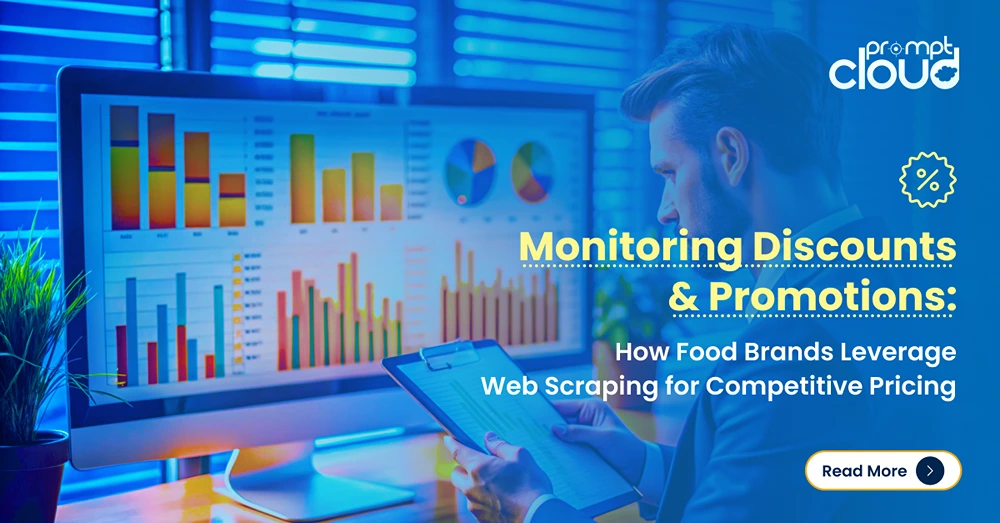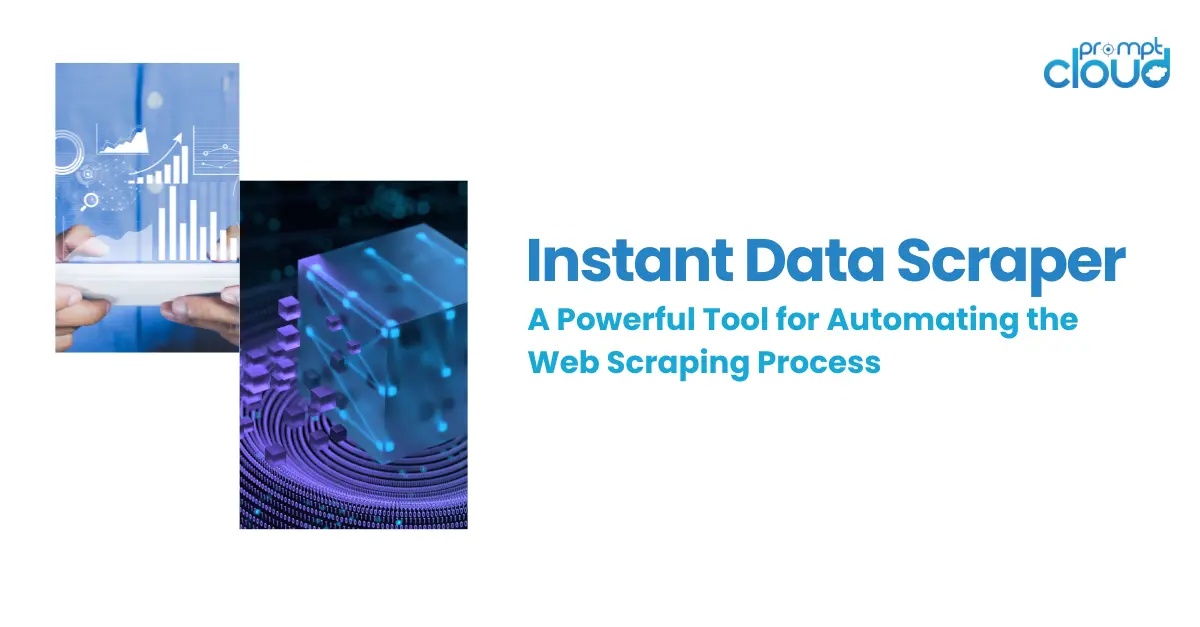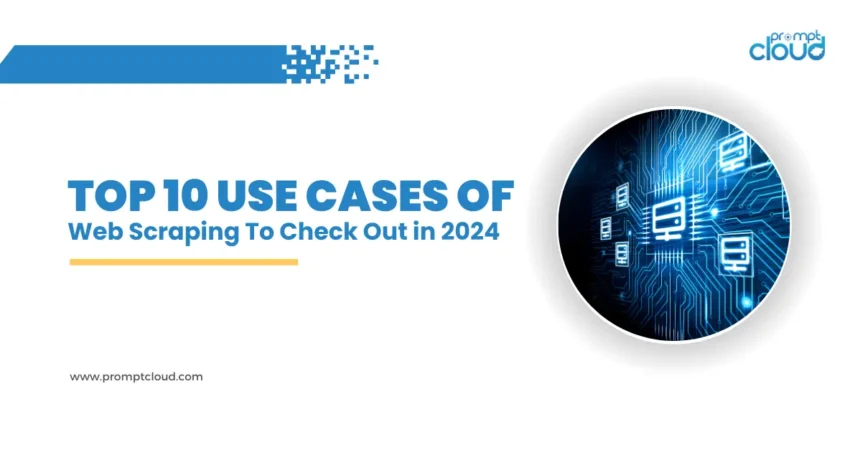
As we venture into 2025, web scraping continues to stand out as a pivotal technology for businesses and individuals alike, offering unparalleled access to online data. Here are the top 10 use cases of web scraping that are expected to dominate various industries and sectors in 2025, demonstrating the vast potential and versatility of this technology.
1. Market Research and Analysis
Market research and analysis stand as the backbone of strategic business planning, offering insights that inform decisions across product development, marketing strategies, pricing, and customer engagement. In the digital age, where data is abundant yet fragmented across various online platforms, web scraping emerges as a powerful tool to consolidate and analyze this vast array of information efficiently.
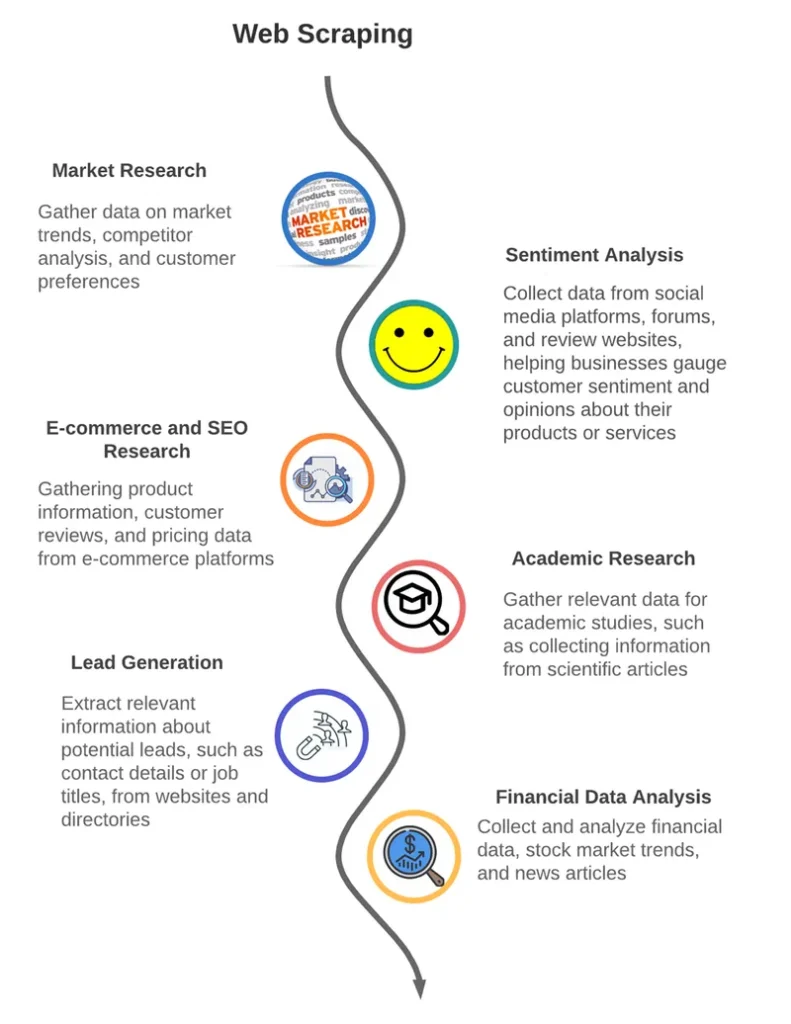
Source: https://scrape-it.cloud/blog/web-scraping-vs-data-mining
Comprehensive Data Collection
Web scraping enables businesses to collect comprehensive data across multiple sources, including competitor websites, customer reviews, forums, social media platforms, and e-commerce sites. This broad spectrum of data provides a holistic view of the market landscape, offering insights into competitor strategies, customer preferences, and potential market gaps.
Real-time Market Insights
The dynamic nature of the digital market demands real-time insights to stay ahead of trends and competitor moves. Web scraping facilitates the continuous monitoring of market changes, providing businesses with up-to-date information that can inform timely and effective decisions.
Competitive Analysis
Understanding competitor strategies is crucial for maintaining a competitive edge. Web scraping allows businesses to analyze competitors’ websites for product offerings, pricing models, marketing strategies, and customer engagement tactics. This information can be used to benchmark performance and uncover opportunities for differentiation.
Customer Sentiment Analysis
Customer reviews and feedback scattered across various platforms offer valuable insights into consumer satisfaction and product perception. Web scraping tools can aggregate this data, allowing businesses to conduct sentiment analysis and gain a deeper understanding of customer needs and pain points.
Trend Spotting and Forecasting
By analyzing data collected from web scraping, businesses can identify emerging trends before they become mainstream. This foresight enables companies to capitalize on new opportunities, develop innovative products, and position themselves as leaders in their industry.
2. Price Monitoring
Price monitoring, in the context of web scraping, has become an essential strategy for businesses looking to stay competitive in the fast-paced digital marketplace. Price monitoring is one of the web scraping use cases popular these days. This process involves tracking the prices of products and services across various online platforms, including competitors’ websites, e-commerce portals, and online marketplaces.
Dynamic Pricing Strategies
With the data obtained from web scraping, companies can implement dynamic pricing strategies, adjusting their prices in real-time based on market demand, competitor pricing, and inventory levels.
Competitive Intelligence
Price monitoring provides valuable insights into competitors’ pricing strategies, including discounts, promotions, and pricing changes. Understanding how competitors price their products and services helps businesses identify market trends, anticipate competitor moves, and position their offerings more effectively.
Enhancing Customer Loyalty
By ensuring their pricing is competitive, businesses can enhance customer loyalty and prevent customers from switching to competitors.
Optimizing Inventory Management
Price monitoring data can also inform inventory management decisions. By understanding pricing trends and demand fluctuations, businesses can adjust their stock levels accordingly, reducing the risk of overstocking or stockouts and improving cash flow management.
3. SEO and Digital Marketing
In the digital age, the importance of SEO (Search Engine Optimization) and digital marketing cannot be overstated. These strategies are crucial for increasing online visibility, attracting targeted traffic, and converting visitors into customers. Web scraping plays a pivotal role in enhancing SEO and digital marketing efforts, offering businesses a competitive edge in a crowded online space.
Keyword Research and Analysis
Web scraping allows for the extraction of vast amounts of keyword data from search engines, competitor websites, and forums. By analyzing this data, businesses can identify high-value keywords, understand keyword trends, and optimize their content to improve search engine rankings.
Competitor Analysis
Understanding competitors’ digital marketing strategies is vital for staying ahead in the market. Web scraping provides insights into competitors’ content, SEO strategies, backlink profiles, and social media presence. This information enables businesses to benchmark their performance, uncover gaps in their own strategies, and identify opportunities for improvement.
Content Strategy Development
Content is king in the digital marketing realm. Web scraping helps in analyzing the content landscape within an industry, including trending topics, content formats, and engagement metrics. Businesses can use this data to inform their content strategy, creating high-quality, relevant content that resonates with their target audience and ranks well in search engine results.
4. Real Estate Market Analysis
Real estate market analysis is a critical process for investors, developers, agents, and various stakeholders in the real estate sector. It involves evaluating the current conditions and trends within the real estate market to make informed decisions about buying, selling, leasing, or developing properties. Market analysis is one of the web scraping use cases popular these days between real estate professionals and players.

Source: ApiScrapy
Aggregating Property Listings
Web scraping allows for the efficient aggregation of property listings from numerous online real estate platforms, classified ads, and agency websites. This consolidated data provides a broad overview of available properties, including prices, features, locations, and more, offering invaluable insights into the current market inventory and conditions.
Analyzing Price Trends
By scraping historical and current pricing data for various types of properties across different regions, analysts can identify pricing trends and patterns. This information is crucial for understanding market dynamics, such as appreciation rates or potential undervalued areas, helping investors make well-informed decisions regarding property investments.
Understanding Demand and Supply Dynamics
Web scraping can gather data on the volume of property listings and inquiries, providing insights into the supply and demand dynamics of specific markets or property types. This analysis helps in predicting market hotspots, potential saturation points, and areas with growth potential.
Monitoring Competitor Strategies
Real estate agencies and developers can use web scraping to monitor the marketing strategies and portfolio offerings of their competitors. Understanding how competitors price their properties, the types of properties they focus on, and their promotional tactics can offer strategic advantages in positioning one’s own listings or developments.
5. Sentiment Analysis
Sentiment analysis, also known as opinion mining, has become an indispensable tool in understanding public sentiment towards products, services, brands, or even broader topics like political views or social issues. This computational study of people’s opinions, sentiments, attitudes, and emotions expressed in text form leverages natural language processing (NLP), text analysis, and computational linguistics. sentiment is one of the web scraping use cases popular these days.
Brand Monitoring and Reputation Management
Companies use sentiment analysis to monitor online mentions of their brand across social media, review sites, forums, and news outlets. Web scraping automates the collection of this data, enabling businesses to gauge public sentiment in real-time.
Product Feedback and Improvement
Sentiment analysis provides valuable feedback on customer experiences with products or services. By scraping reviews and feedback from e-commerce sites, social media, and specialized review platforms, businesses can identify common complaints, praise, and suggestions for improvement.
Market Research and Consumer Insights
Understanding consumer preferences, needs, and aversions is essential for successful market positioning and product development. Sentiment analysis, powered by web-scraped data, offers deep insights into consumer attitudes towards various products, services, and brands. Companies can use this information to tailor their offerings to meet market demands better, identify niche opportunities, and predict emerging trends.
Competitive Analysis
Sentiment analysis can extend beyond monitoring one’s own brand to include analysis of competitors. By scraping and analyzing data related to competitors, businesses can benchmark against industry standards, identify competitive advantages, and uncover areas for differentiation.
6. Product Development and Innovation
Product development and innovation are at the heart of a company’s growth and competitive advantage. In today’s fast-paced and customer-centric market, leveraging web scraping for sentiment analysis provides invaluable insights that can drive product innovation and development. Here’s an in-depth look at how this approach is revolutionizing the process:
Identifying Customer Needs and Gaps
Web scraping allows businesses to collect vast amounts of data from various online sources, including forums, social media platforms, review sites, and e-commerce platforms. Analyzing this data helps identify current customer needs, pain points, and gaps in the market.
Trend Spotting and Market Analysis
Market trends can shift rapidly, and staying ahead requires a keen understanding of these changes. Web scraping provides real-time data on consumer behavior, preferences, and emerging trends. This information is critical for developing products that align with market demands and for anticipating future shifts in consumer preferences, allowing companies to position their products strategically.
Competitor Product Analysis
Understanding the competitive landscape is crucial for successful product development. Web scraping enables companies to analyze competitors’ products, features, pricing, and customer feedback.
7. Academic Research
Academic research significantly benefits from the capabilities of web scraping, offering researchers a powerful tool to gather vast amounts of data across disciplines. This approach not only streamlines the data collection process but also opens up new avenues for analysis and discovery. Academic research is one of the web scraping use cases popular these days.
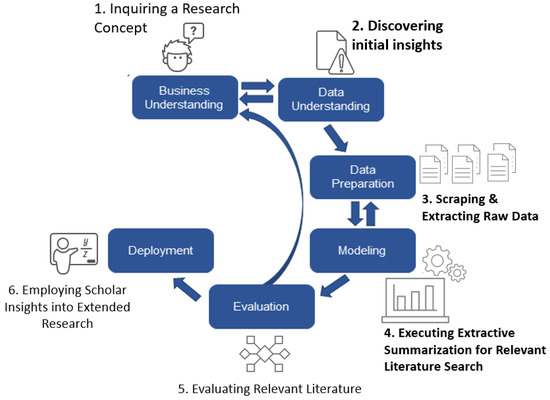
Source: https://www.mdpi.com/2571-5577/2/4/37
Expanding Data Sources
Web scraping enables researchers to access a wide array of data sources that were previously difficult or time-consuming to collect. This includes information from social media platforms, online forums, news websites, and digital libraries.
Facilitating Longitudinal Studies
The ability to automate data collection over time with web scraping tools allows for longitudinal studies that track changes and trends. This is particularly valuable in social sciences, economics, and health studies, where understanding dynamics over time can provide deeper insights into cause-effect relationships and societal shifts.
Enhancing Data Quality and Quantity
Web scraping provides access to large volumes of data, which is crucial for statistical analysis and machine learning models that require big datasets to improve accuracy and reliability. The automation of data collection reduces the risk of human error, ensuring higher data quality and consistency.
8. Recruitment and HR
Recruitment and HR (Human Resources) are crucial functions within any organization, focusing on attracting, hiring, and retaining talent. Web scraping has emerged as a valuable tool in modernizing and enhancing recruitment and HR practices. By automating the collection of data from various online sources, HR professionals can gain insights into the job market, streamline the recruitment process, and improve talent management strategies.
Talent Acquisition and Sourcing
Web scraping enables HR departments to automate the extraction of candidate data from job boards, professional networking sites like LinkedIn, and social media platforms. This data includes resumes, portfolios, and professional profiles, providing a rich pool of potential candidates.
Competitive Analysis for Employer Branding
Understanding how competitors position themselves as employers can offer valuable insights for shaping one’s employer brand and value proposition. Web scraping allows HR teams to gather data on competitors’ employer branding strategies, including benefits, employee reviews, and workplace culture highlighted on platforms like Glassdoor.
Salary Benchmarking
To remain competitive and fair in compensation packages, HR professionals need up-to-date information on industry salary standards. Web scraping can collect salary data from various online sources, providing insights into compensation trends across different roles, industries, and regions.
Job Market Trends and Skills Analysis
The job market and required skill sets are continually evolving. Web scraping helps HR professionals track these changes by analyzing job postings, industry reports, and educational content across the web.
9. Supply Chain and Logistics Optimization
Supply Chain and Logistics Optimization are critical components of the modern business landscape, ensuring that products are delivered efficiently from manufacturers to consumers. The advent of web scraping technologies has significantly enhanced the capabilities of supply chain and logistics professionals to optimize operations, reduce costs, and improve service levels.
Real-time Market and Demand Insights
Web scraping enables companies to gather real-time data on market trends, consumer demand, and competitive strategies. By analyzing this data, businesses can anticipate market shifts, adjust inventory levels, and adapt their supply chain strategies to meet consumer demands efficiently, avoiding overstocking or stockouts.
Supplier and Vendor Analysis
Finding reliable suppliers and vendors is crucial for maintaining the quality and continuity of supply chain operations. Web scraping allows for the collection of data on supplier performance, reliability, pricing, and compliance with sustainability standards.
Freight and Shipping Cost Optimization
Transportation costs are a significant component of supply chain expenses. Web scraping provides access to real-time shipping rates, freight capacities, and route availability across multiple carriers. Businesses can use this data to compare options, optimize shipping routes, negotiate better rates, and ultimately reduce transportation costs.
10. Academic and Market Research
In both academic and market research, the ability to gather large volumes of data accurately and swiftly is crucial. Web scraping automates the process of extracting information from various websites and online platforms, turning unstructured web content into structured data that can be analyzed and leveraged for insights.
Academic Research
- Literature Review and Meta-analysis: Web scraping facilitates the collection of published articles, papers, and citations across digital libraries and academic journals, aiding in comprehensive literature reviews and meta-analyses.
- Social Media Analysis: Researchers use web scraping to gather data from social media platforms to study trends, public opinion, and social phenomena. This data helps in understanding societal behaviors, political sentiments, and cultural dynamics.
- Environmental Data Collection: Scraping environmental data from governmental and non-governmental websites enables researchers to study climate change, pollution levels, and conservation efforts on a large scale.
Market Research
- Consumer Sentiment Analysis: By scraping reviews and feedback from e-commerce sites and forums, analysts can gauge consumer sentiment towards products or brands, informing marketing strategies and product development.
- Competitive Intelligence: Web scraping provides insights into competitors’ pricing, product offerings, and marketing tactics by collecting data from their websites, public filings, and press releases.
- Trend Forecasting: Gathering data on consumer search trends, social media mentions, and online news articles helps in identifying emerging market trends and consumer interests, guiding strategic planning and innovation.
Summary
The use cases for web scraping in 2025 are as diverse as they are impactful, offering a glimpse into the future of how data will continue to drive strategic decisions, innovation, and competitive advantage across all sectors. As web scraping technologies evolve, so too will the opportunities for businesses to harness the power of the web’s vast resources. However, it’s crucial to navigate the ethical and legal considerations of web scraping, ensuring that data is collected responsibly and in compliance with applicable laws and regulations. With the right approach, web scraping will remain a key enabler of business and research advancements in 2025 and beyond.














